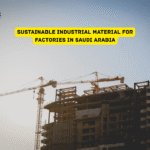When it comes to industrial, construction, or plumbing projects, selecting the right valve, pipe, and fitting can make a world of difference in performance, efficiency, and long-term reliability. These components are the backbone of any fluid handling or mechanical system. A single mismatch or low-quality part can lead to leaks, corrosion, pressure loss, or even system failure. Whether you are working on a large-scale industrial project or a small mechanical setup, understanding how to choose the right valve, pipe, or fitting is essential.
This comprehensive guide will help you make informed decisions based on material, size, pressure rating, and application requirements. By the end of this article, you will know exactly how to match your system’s design with the most suitable materials and configurations.
How to Choose Right Valve, Pipe, or Fitting for Your Project
Valves, pipes, and fittings are not just connecting parts. They control, direct, and maintain the flow of liquids or gases throughout a system. When selected properly, they enhance safety, ensure efficient operation, and reduce maintenance costs.
Incorrect choices, however, can lead to system inefficiencies or even catastrophic damage. Using the wrong material or size can cause pressure drops, leaks, corrosion, or contamination. Therefore, selecting the right combination is not simply about matching sizes; it’s about understanding how these parts perform under specific operating conditions.
Step 1: Identify the Type of Project and Application
Before selecting any component, start by defining your project’s scope and environment. Are you working on an industrial pipeline, water treatment plant, construction site, or oil and gas facility? Each environment has its own unique conditions such as temperature, pressure, and chemical exposure.
For instance:
- Industrial plants require high-strength materials like stainless steel to handle corrosive fluids and high pressure.
- Construction sites often use PVC or CPVC pipes for plumbing and drainage because they are lightweight and easy to install.
- Oil and gas sectors rely on carbon steel or alloy steel due to extreme pressure and temperature conditions.
Knowing your application ensures that you select materials and designs capable of handling the demands of your system.
Step 2: Understand the Flow Requirements
Every system is designed to handle a certain flow rate. The type and size of your pipe and valve directly influence the system’s efficiency.
If the pipe diameter is too small, it will create high velocity and friction losses, reducing the system’s efficiency. If it is too large, it can lead to unnecessary material costs and difficulties in maintaining consistent pressure.
The flow rate, pressure drop, and temperature all need to be considered when deciding on component sizes. Engineers typically calculate these factors based on fluid properties and desired performance outcomes.
Step 3: Choose the Right Pipe Material
The pipe material determines how well your system can resist corrosion, temperature changes, and pressure fluctuations. Below are common pipe materials and their ideal applications:
- Steel Pipes:
Used for high-pressure and high-temperature environments. Available in carbon steel and stainless steel.
- Carbon steel offers durability and strength for oil, gas, and industrial systems.
- Stainless steel provides excellent corrosion resistance for chemical and food industries.
- Copper Pipes:
Highly reliable for plumbing, HVAC, and refrigeration systems. Copper resists corrosion and has natural antibacterial properties, making it ideal for potable water. - PVC and CPVC Pipes:
Lightweight, affordable, and resistant to many chemicals. Commonly used in residential and light industrial applications. CPVC handles higher temperatures than PVC. - HDPE Pipes:
Flexible and durable plastic pipe used for underground and industrial applications. It resists abrasion and is excellent for transporting chemicals. - Ductile Iron Pipes:
Extremely strong and ideal for municipal water and wastewater systems. They can handle high pressure and last for decades.
Choosing the correct material depends on your system’s temperature range, type of fluid, and exposure to external elements.
Step 4: Selecting the Right Valve Type
Valves control the flow and pressure of liquids or gases within a pipeline. They can start, stop, or regulate flow depending on the system’s requirements. Here are the most common types of valves and their uses:
- Ball Valve:
Quick to operate, durable, and ideal for on/off control in pipelines. Commonly used in oil, gas, and water systems. - Gate Valve:
Used for full open or full close applications. Provides minimal pressure loss when fully open but not suitable for throttling. - Globe Valve:
Designed for regulating flow. Excellent for systems requiring precise flow control but has higher pressure drop than a gate valve. - Butterfly Valve:
Lightweight and compact, ideal for large diameter pipes where quick shut-off is needed. Common in water supply and HVAC systems. - Check Valve:
Prevents backflow by allowing fluid to flow in only one direction. Critical for protecting pumps and maintaining consistent flow direction. - Pressure Relief Valve:
Protects equipment from excessive pressure by releasing fluid when the system pressure exceeds safe limits.
Each valve type serves a specific purpose, so it is important to understand your control needs before selecting one.
Step 5: Choosing the Right Fittings
Pipe fittings connect sections of pipe or join pipes to other components like valves and tanks. The right fitting ensures leak-free performance and consistent flow.
Common types of fittings include:
- Elbows: Change the direction of flow, typically 45° or 90°.
- Tees: Connect three pipes and split or combine flow.
- Reducers: Connect pipes of different diameters.
- Couplings: Join two pipes together in a straight line.
- Unions: Similar to couplings but can be easily disconnected.
- Flanges: Used to connect pipes, valves, or pumps with bolted connections.
Selecting fittings made from the same material as the pipe is essential for compatibility and longevity.
Step 6: Consider Pressure and Temperature Ratings
Each pipe, valve, and fitting is designed to withstand a specific pressure and temperature range. Using a component that cannot handle your system’s conditions may result in leaks or ruptures.
Always check manufacturer specifications for:
- Maximum Operating Pressure (MOP)
- Temperature Range
- Safety Factors
For high-pressure applications like oil refineries, use forged steel valves and fittings. For lower-pressure systems like irrigation or drainage, PVC or HDPE components are often sufficient.
Step 7: Corrosion Resistance and Fluid Compatibility
Corrosion is one of the most common causes of system failure. The type of fluid flowing through the system determines the risk of corrosion or chemical reaction.
- For water or mild liquids: Galvanized steel or PVC may be sufficient.
- For acids or chemicals: Stainless steel or lined carbon steel provides better protection.
- For gases or oil: Use carbon steel or alloy materials that resist pressure and oxidation.
Never mix materials that may react with each other. For instance, avoid combining copper and steel in the same system, as galvanic corrosion can occur.
Step 8: Installation and Maintenance Considerations
Ease of installation and maintenance should also influence your selection. Pipes that are difficult to access or replace should be made from highly durable materials. Similarly, valves that require frequent adjustments should be easy to operate and located in accessible areas.
Quick-connect fittings or flanged connections simplify maintenance by allowing for easy disassembly. Systems that require regular inspection benefit from transparent or labeled pipelines for quick identification.
Step 9: Budget and Long-Term Costs
While it may be tempting to choose the cheapest materials, this can lead to higher costs later. High-quality valves, pipes, and fittings often come with better sealing, longer lifespan, and lower maintenance costs.
Consider the total cost of ownership, which includes:
- Purchase cost
- Installation
- Maintenance
- Replacement intervals
Investing in durable materials and reliable brands ensures fewer shutdowns and repairs in the long run.
Step 10: Compliance with Industry Standards
All components must comply with local and international standards such as ASME, ASTM, API, or ISO. Using certified materials guarantees safety, reliability, and compatibility.
Industry certifications also ensure that products have been tested for pressure, temperature, and material performance. Always request test certificates and documentation from suppliers before purchase.
Common Mistakes to Avoid
- Ignoring compatibility: Always ensure fittings and valves match the pipe material and size.
- Overlooking operating conditions: Failing to account for temperature and pressure can lead to premature failure.
- Skipping maintenance access: Poor design makes it difficult to service or replace components later.
- Choosing cost over quality: Low-cost materials may corrode or fail quickly under demanding conditions.
- Not verifying supplier reliability: Work with trusted suppliers who provide certifications and technical support.
Conclusion
Choosing the right valve, pipe, and fitting is not just a technical task, it is a strategic decision that affects your project’s safety, efficiency, and cost-effectiveness. Each component plays a vital role in maintaining smooth operations and preventing costly breakdowns.
When selecting materials and designs, always consider your application type, pressure and temperature requirements, fluid characteristics, and environmental conditions. Work with experienced suppliers and engineers who can provide guidance and certifications for every component.
By following these guidelines, you can ensure your project runs safely, efficiently, and sustainably.
For the best quality industrial materials and professional supply services, contact STS GCC today, your trusted industrial solutions provider in Saudi Arabia.






